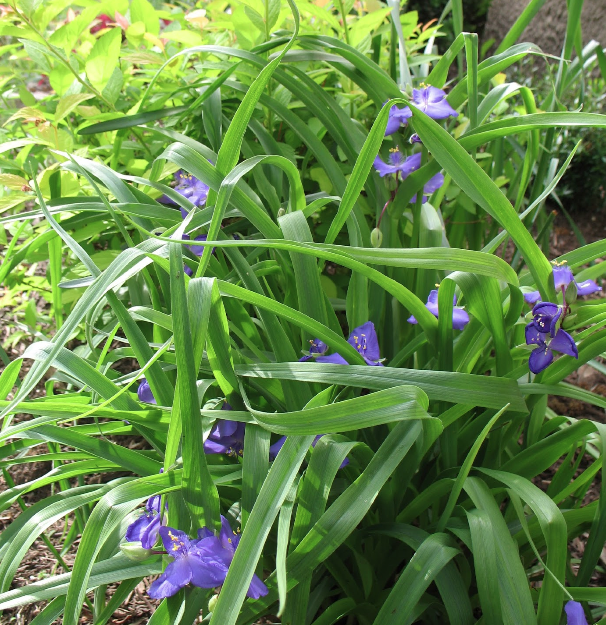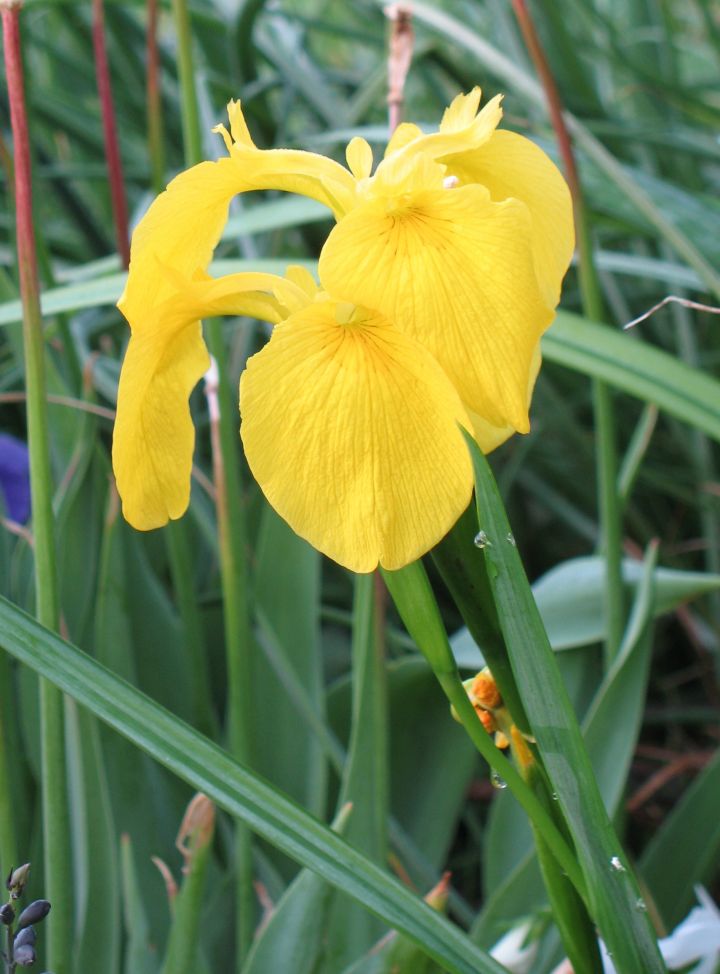Rain Gardens: Control water runoff with style.
June 22, 2015 | By webadmin
Our weather here in Dallas is often feast or famine: We experience long periods of heat and drought, but can also receive huge amounts of heavy rain over a short period of time. As we’ve seen this spring, our compacted clay soils have a difficult time absorbing all of that rain and the result is runoff and flooding. When you live in an area that experiences heavy rainfall in fast doses, you need to be strategic about how you manage that waterflow in your landscape. By building a rain garden, you can slow down the runoff that can quickly overflow storm drains and creeks and also reduce soil erosion.

Spiderwort thrives in wet conditions.
What is a rain garden?
Simply put, a rain garden is designed to absorb rain and filter water runoff from hard surfaces by capturing it and allowing it to soak into the soil before it enters into storm drains, local creeks, rivers, and drinking water. Water that flows through streets, off roofs and from lawns can contain many pollutants. The plants in rain gardens can help naturally filter the water of contaminants before it drains out into our surrounding environment.
It’s often thought that rain gardens should be built in areas where water already collects on your property. But in fact, their purpose is to help move water away from where it collects and also catch it where it becomes runoff, then filter it out through strategic drainage areas. You can also divert your rain gutter water to your rain garden.
First you’ll build a shallow depression where you need to direct water flow and capture runoff, then fill it it with river rocks, well-draining soil and native and adapted plants. Rain gardens are typically surrounded by a berm in order to keep runoff contained long enough to slow it down and filter the water.
A rain garden can provide both beauty and additional water conservation in the urban landscape. Rain gardens can be as large or small as your spaces and needs allow. Good places for a rain garden include areas around sidewalks, near easements and driveways where water runoff is heavy.
Plants perfect for a rain garden.
Native and adapted plants are always suggested for a rain garden. For the outer edges of your rain garden that are on the higher end of the depressed area, choose plants that can tolerate drier conditions. For the lower areas of the area, choose plants that might not mind a bit of wet feet, but can also tolerate periods of dryness.
While there are many to choose from, here are a few of our favorite rain garden plants:
- Yellow Flag, Iris Pseudacorus, loves water and so is perfect for the wet areas of a rain garden. Because it absorbs heavy metals, yellow flag is often used to clean waterways.

- Spiderwort, Tradescantia spp. loves the shade to dappled sun and will thrive in wet soils.
- Maiden Grass: Maiden grass, or species in the genus Miscanthus, are able to tolerate both wet and dry conditions in a full sun garden.
Ready to design your rain garden? We can help. Or, if you are a DIYer, feel free to ask questions on Facebook and Twitter.
